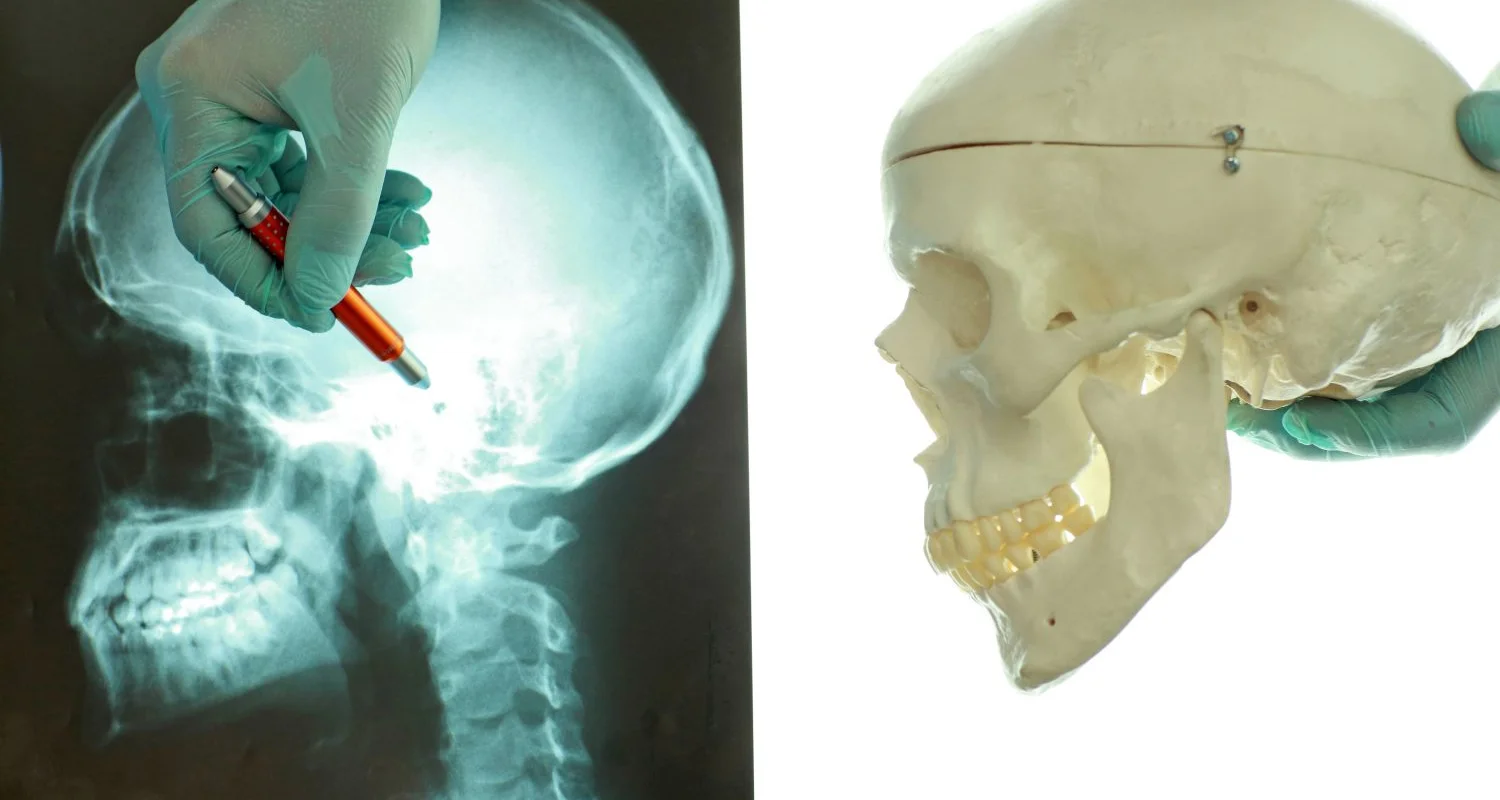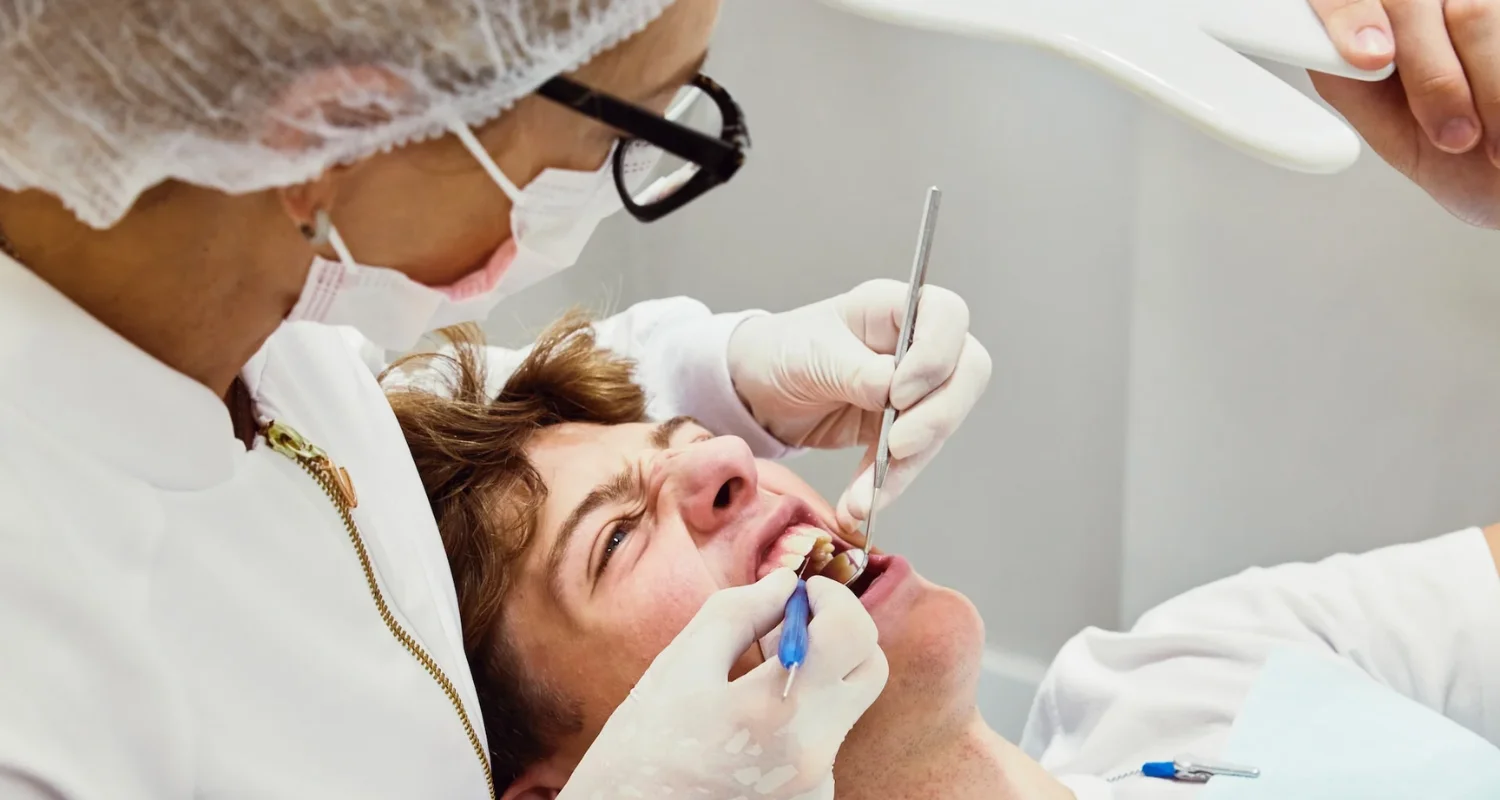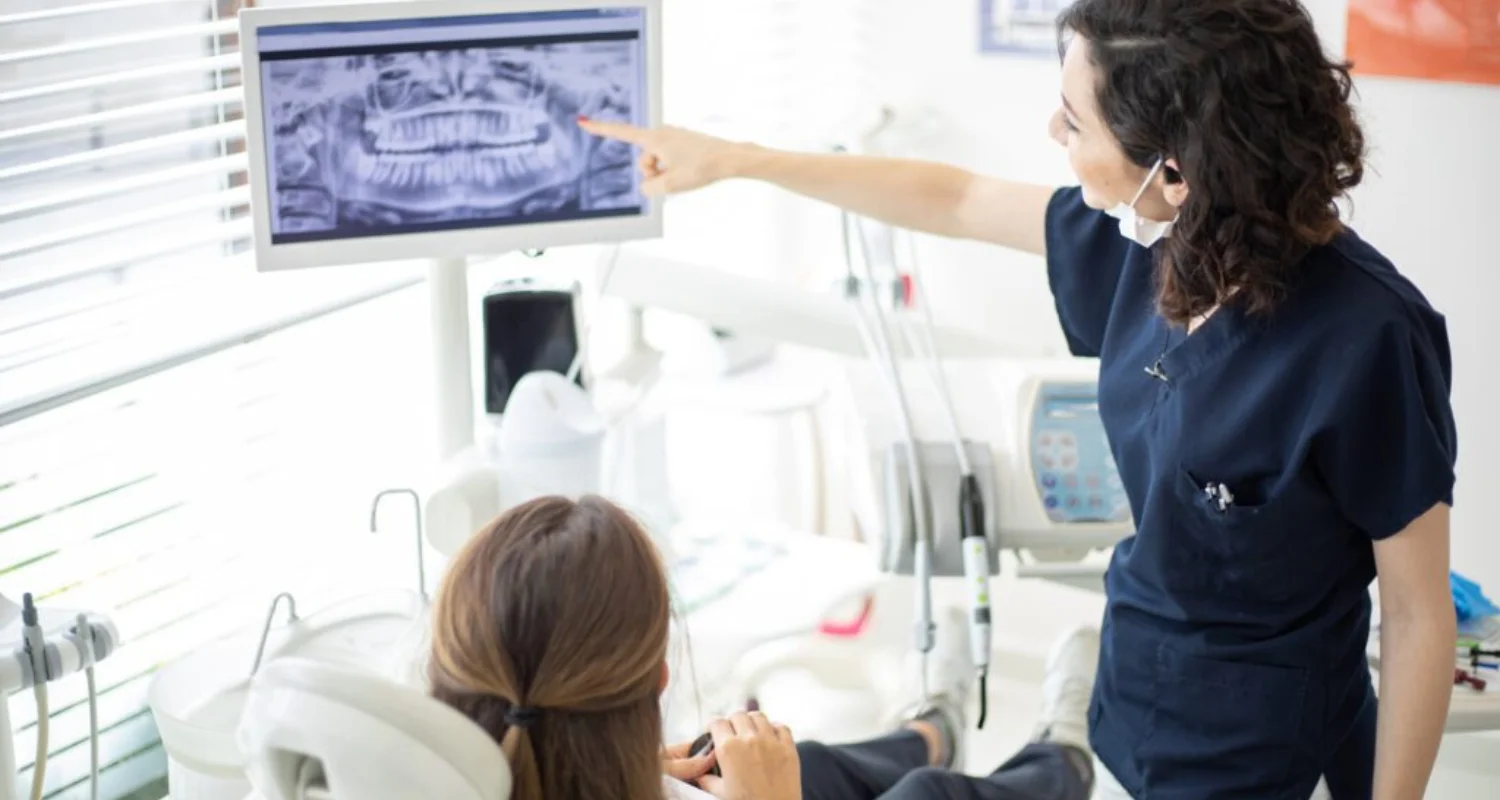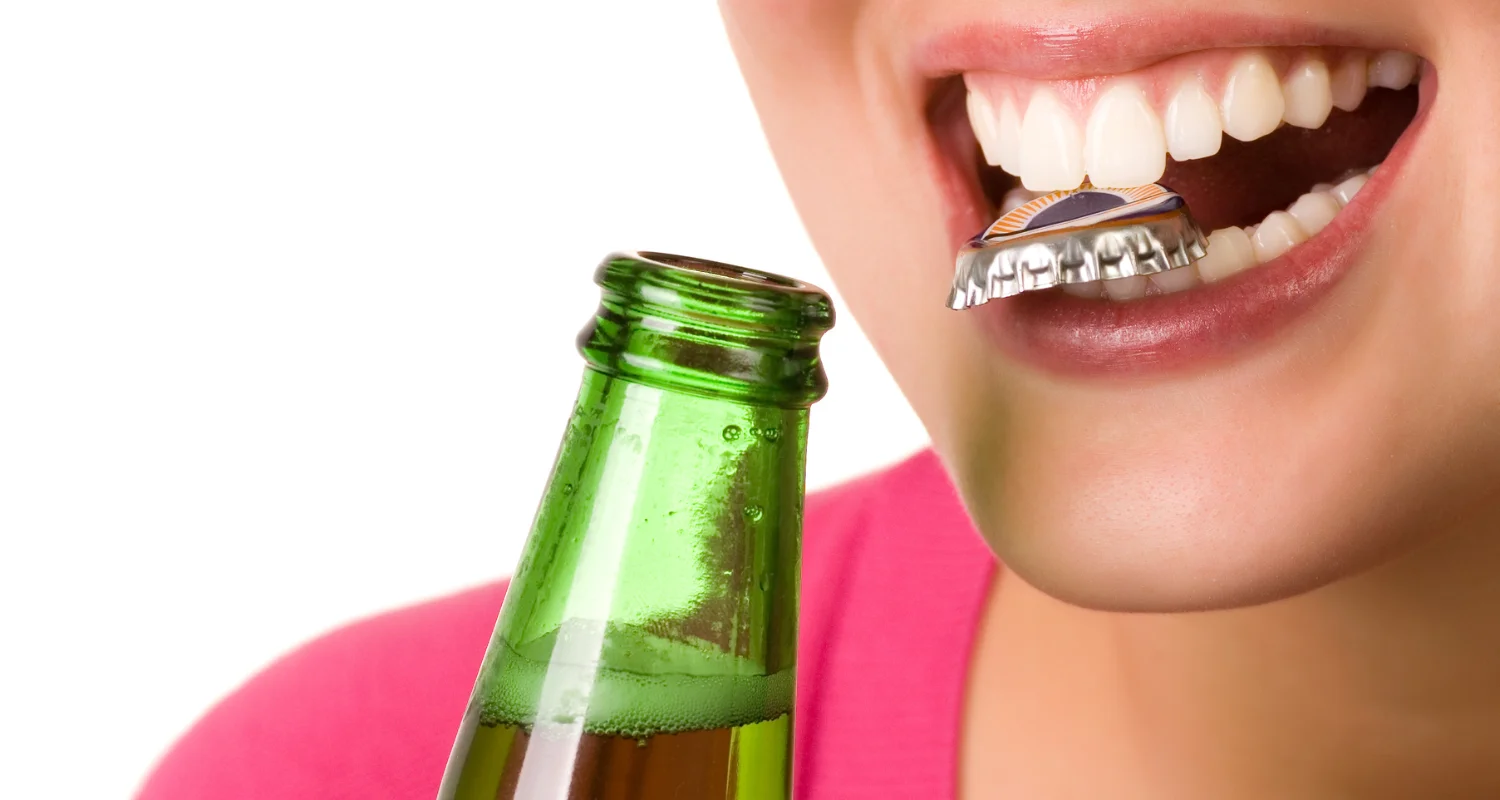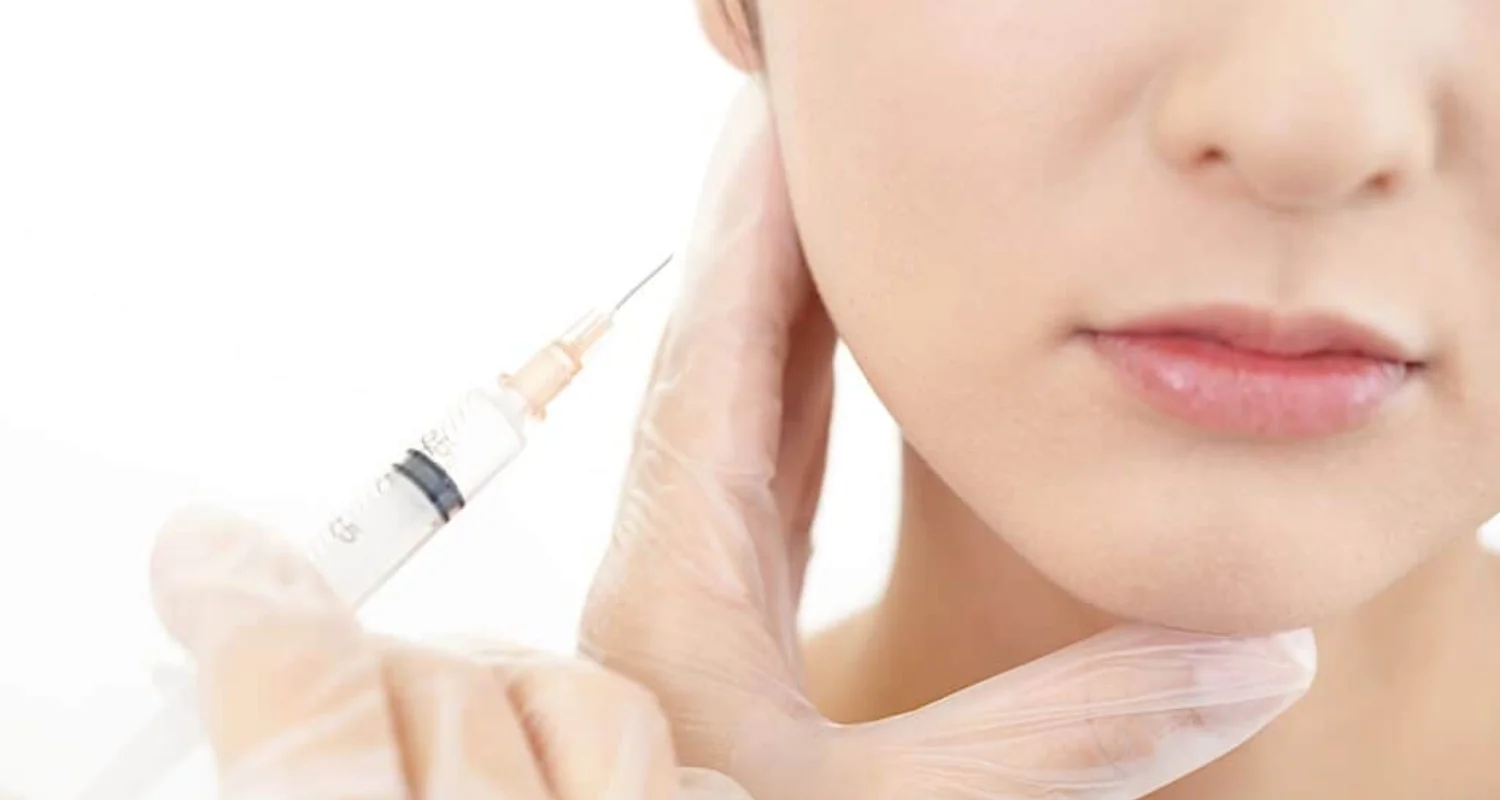Last Updated on: 16th December 2025, 10:43 am
The temporomandibular joint is a highly important structure that acts as a link between the jaw bones and skull. It is situated on each side of the head near the ears and functions like a hinge. Any problems with your jaw and the muscles in your face that control it are known as temporomandibular disorders, or TMJ disorders.
TMJ disorders are known to cause problems in crucial activities such as chewing, speaking, and yawning. Symptoms may range from simple pain and stiffness in the jaw to clicking or even grating sounds, escalating up to headaches, earaches, and painful opening or closing of the mouth that hamper overall quality of life.
Understanding TMJ disorders is extremely important for timely intervention. Early treatment of these conditions can prevent even more pain and allow for better jaw function. Therefore, this article will provide an overview of TMJ disorders: the types and causes. To top everything off, a number of practical tips for handling and relieving these conditions will be offered.
What are TMJ Disorders?
TMJ disorders are a group of conditions affecting the jaw joint, the muscles surrounding it and the associated structures. According to research, the overall prevalence is approximately 31% for adults/elderly and 11% for children/adolescents.
These disorders cause jaw pain, hindered mobility, and other negative oral health impacts. Also known as temporomandibular joint dysfunction (TMD), they refer to pain in the jaw muscles, TMJ, and the associated neural structures.
The National Institute of Dental and Craniofacial Research categorizes TMD into three main categories:
● Myofascial pain: This is the most common type of TMD, which refers to pain or discomfort arising in the fascia (connective tissue) and the muscles controlling the jaw, neck, and shoulders.
● Internal derangement: This happens when the mandible is misaligned with the skull, there is a jaw space between the disc, and the condyle’s cartilage (the rounded end of the jaw that fits into the skull) is distorted.
● Degenerative Joint Disease: Any form of osteoarthritis or rheumatoid arthritis affecting the TMJ.
The more complicated it is, since it is also possible to experience more than one of these conditions simultaneously.
What Causes TMJ Disorders?
TMJ disorders can occur due to different factors; but in most instances, the exact cause is unknown. Some of the known contributing factors are:
● Trauma to the jaw or head: Any damage to the jaw, head, or temporomandibular joint may cause TMJ.
● Arthritis: Degeneration of the TMJ can be caused by conditions like osteoarthritis or rheumatoid arthritis.
● Grinding or clenching (bruxism): Habitual teeth grinding or clenching puts too much stress on the TMJ and its associated muscles.
● Stress and muscle tension: Stress is often compensated with jaw muscle tension, which worsens pain and discomfort.
● Poor posture: Misalignment of the head and neck can be hazardous to the jaw joint, creating unwanted stress and tension.
● Dental surgery: Certain dental procedures that require prolonged jaw opening, such as tooth extractions or extensive orthodontic work, can strain the TMJ and its muscles.
● Infections: Infections near or within the TMJ can cause inflammation, pain, and swelling. These infections might arise from abscessed teeth, sinus infections, or post-surgical complications, impacting the joint’s normal function.
For many patients, TMD symptoms emerge suddenly with no apparent explanation. More recent research postulates a model of contributing genetic factors, psychological stress, life experiences, and individualized pain perception in the development and maintenance of TMD.
Common Symptoms of TMJ Disorders
TMJ disorders can cause a wide range of symptoms that affect not only the jaw but also areas of the face, head, and neck. Common symptoms include:
● Jaw pain or tenderness: Pain in the jaw, face, neck, shoulders, or around the ears during physical activities such as chewing, speaking, or yawning.
● Difficulty chewing or opening the mouth: Pain or stiffness when chewing or trying to open your mouth wide.
● Clicking, popping or grating: Sounds within the jaw joint when opening and closing the mouth or chewing, which might be painful or not.
● Locking of the jaw: The jaw feels stuck or locked in an open or closed position.
● Facial fatigue or swelling: A tired face or visible swelling on one side of the face.
● Bite or chewing problem: Pain while chewing or the feeling that the upper and lower teeth are not properly aligned.
● Headache, earache, or tinnitus: One experiences frequent headaches, ear pain or tinnitus.
● Dizziness and numbness: Some report dizziness or numbness in their fingers.
● Neck or upper shoulder pain: Discomfort may also cause pain in the neck and upper shoulders.
How are TMJ Disorders Diagnosed?
TMJ disorders are often tricky to diagnose as they present with symptoms similar to common issues such as toothaches, sinusitis, and ear infections. There is no one test that confirms TMJ disorders; hence, diagnosis usually results from a combination of the following approaches:
Clinical examination
Clinical examination begins with the dentist or healthcare provider checking jaw movement, range of motion, any clicking, popping or grinding of the TMJ and tenderness or pain within the jaw, face or neck.
Patient history
Accurate diagnosis of TMJ disorders requires a good understanding of the patient’s symptoms, medical history, and other lifestyle aspects. Some of the common questions asked include:
● Pain characteristics: duration, place, intensity.
● Locking of jaw or inability to chew.
● Stress levels and sleep habits.
● Any history of recent trauma or dental treatment.
Radiological studies
Imaging, such as X-rays, MRI and CT scans may be needed to exclude other diagnoses or get an overview of the jaw’s internal structure.
Diagnostic tests and tools
● Bite analysis: of how the upper and lower teeth align, which can indicate any stress on the TMJ.
● Arthroscopy: invasive but very precise, wherein a small camera is put into the joint space in order to have a visual view.
● Ultrasound: it will reveal structural abnormalities in the joint.
How to Treat TMJ Disorders
Home remedies
Treatment of TMJ disorders usually starts with simple, non-invasive procedures that help reduce pain and discomfort and improve jaw function. Below is a comprehensive view of the most effective remedies one can follow in the comfort of their own home:
● Hot or cold compresses
Apply an ice pack to the side of your face and temple for about 10 minutes to reduce any swelling or discomfort. Stretch your jaw gently, as advised by your dentist. Post this, dip a towel or washcloth in warm water and apply to the affected area for about 5 minutes and relax your muscles. Repeat this cycle as many times in a day as you need for a better result.
● Use relaxation techniques
Stress is a common contributor to TMJ disorders because clenching the jaw or tensing the muscles are often caused by it. Some relaxation techniques include:
-Deep breathing: This helps calm the nervous system, reducing the tightness in the muscles.
-Meditation: Regular meditation helps in dealing with stress and preventing the tension from affecting the jaw.
-Progressive muscle relaxation: A practice that involves tensing and relaxing various muscle groups to help release the tension held in the face and neck.
● Practice gentle jaw stretches and related exercises
Speak with a healthcare provider or physical therapist to learn specialized stretches that improve jaw function and reduce tension. Some techniques such as opening and closing the mouth slowly without overstretching and moving the jaw back and forth help strengthen the jaw muscles, improve alignment, and promote healing. However, they must not be overdone as they may worsen the condition.
● Avoid hard or chewy foods
Raw vegetables, firm meats, gum, or sticky candies could strain the TMJ and worsen its irritated state. Soft, easily chewed foods and soft liquids, such as soups, mashed potatoes, yogurt, scrambled eggs, or smoothies can be consumed.
● Maintain good posture
Poor posture, especially when sitting at a desk or using electronic devices, puts strain on the neck and jaw, indirectly affecting the TMJ. Maintain a straight back, loose shoulders, and chin resting on the ground to achieve the most comfortable posture to reduce any strain on the TMJ. Make ergonomic modifications to your workspace such as using an ergonomic chair and placing your computer screen at eye level.
Medical Treatments
When home remedies fail to work, consulting your dentist is the next step. Treatment modalities for managing TMJ disorders can be divided into non-surgical and surgical treatments, depending upon the severity of the condition and the patient’s individual needs. Below is an overview of the various treatments available:
● Nonsurgical treatments
Since most of the problems of the jaw joint and muscles are transient and do not become worse, relatively minor and non-surgical treatments, such as the ones given below, usually suffice.
● Physical therapy
Physical therapy seeks to regain movement and enhance jaw function. One of the most common techniques is manual therapy, where a therapist stretches and manipulates the soft tissues and muscles surrounding the TMJ.
● Behavioural health techniques
-Cognitive behavioral therapy: This will aid in the identification and help change negative patterns of thinking while teaching coping skills.
-Biofeedback: Devices track your body’s responses such as muscle contraction or heart rate, wherein, a jaw sensor can be placed and can detect when you clench your jaw. The therapist can then guide you in identifying and overcoming these unconscious habits.
● Medications
Medications can also be prescribed to help with symptoms that may include over-the-counter medications such as ibuprofen, which is an effective NSAID for pain relief. Prescription medications such as anxiolytics, antidepressants, and certain muscle relaxants may be advised for further management.
● Nightguards or splints
These plastic mouthpieces fit over your upper and lower teeth closely so they don’t touch. They reduce the impact of clenching or grinding and adjust your bite by putting your teeth in a better position. The difference being that you wear night guards while sleeping but you use a splint all the time.
What make TMJ dysfunction worse
● Using the teeth as tools
● Biting on pens, pencils, or other things
● Biting on ice or over chewing gum
● Daytime clenching or grinding
● Sleeping on your stomach
Surgical TMJ Treatments
When medicines and other non-invasive measures have failed, there is the need to opt for surgical treatment. There are several types of TMJ surgeries, which include:
● Arthrocentesis
This procedure is usually performed to establish the cause of joint pain and involves passing a needle into the joint for the purpose of draining off fluid; in turn, it may aid in reducing pain and enhancing the mobility of the joint.
● TMJ arthroscopy
This is a less invasive procedure and is also known as “keyhole surgery”. TMJ arthroscopy mainly involves giving an incision through which a tube is passed that holds a light and camera. Via this tube, surgical instruments can be inserted for altering the bone, removing any scar tissue or displacing the joint’s disk where necessary.
● Open-joint surgery
In other, more serious conditions where arthroscopy cannot be done, an open-joint surgery is performed, mostly under general anaesthesia. The incision is larger than the one given in arthroscopy to gain direct access to the joint.
Alternative Treatments for TMJ Disorders
In addition to traditional medical approaches, alternative treatments can provide relief for some individuals with TMJ disorders. While these methods may not work for everyone, they can complement regularly used therapies:
Acupuncture
This form of therapy is one of the oldest medical techniques that involves the insertion of fine needles into the body at certain points to stimulate the nervous system and enhance blood flow with the aim of managing pain and controlling muscle spasm.
Transcutaneous Electrical Nerve Stimulation (TENS)
TENS therapy is a form of electrical stimulation that applies low intensity electrical currents to the skin to stimulate facial muscles and provide relief from any discomfort. It enhances blood flow around the TMJ, thus reducing pain and swelling.
Trigger-point injections
Pain medications, anaesthesia or substances like corticosteroids or botulinum toxins are injected into facial muscles that are tender upon palpation – the areas called ‘trigger points’ to relieve pain and discomfort.
Radio wave therapy
Radio waves stimulate the joint, which leads to an increase in blood supply and reduction in pain.
Low-level laser therapy
This is used in reducing pain and inflammation and helping in making jaw movements easier.
Conclusion
TMJ disorders can be challenging to manage, but a combination of medical treatments, lifestyle changes, and alternative therapies can offer relief and improve jaw function. It’s important to consult a healthcare professional to develop a personalized plan specific to your situation. While many cases resolve with conservative approaches, early intervention and self-care should prevent symptoms from worsening and enhance your overall quality of life.
Frequently Asked Questions
What is Temporomandibular Joint Disorder (TMJ)?
TMJ disorder refers to a group of conditions affecting the temporomandibular joint, which connects the jawbone to the skull. It can cause pain, limited mobility, and discomfort in the jaw and surrounding areas, impacting activities such as chewing, speaking, and yawning.
What are the symptoms of TMJ disorder?
Common symptoms include jaw pain, difficulty chewing, clicking or popping sounds in the jaw, facial swelling, headaches, earaches, dizziness, and neck or upper shoulder pain. Some may experience jaw locking or a misaligned bite.
What causes TMJ disorders?
TMJ disorders can be caused by trauma to the jaw, arthritis, teeth grinding or clenching (bruxism), stress-induced muscle tension, poor posture, infections, or prolonged dental procedures. In some cases, the cause remains unknown.
How are TMJ disorders treated?
Treatment options range from home remedies like hot or cold compresses, jaw exercises, and stress management to medical interventions such as physical therapy, medications, nightguards, or splints. Severe cases may require surgical treatments like arthroscopy or open-joint surgery.
Can lifestyle changes help manage TMJ disorders?
Yes, lifestyle modifications such as avoiding hard or chewy foods, maintaining good posture, practicing relaxation techniques, and managing stress can significantly reduce TMJ pain and improve jaw function. Consulting a healthcare provider for personalized advice is recommended.
Share
References
1. Valesan, L. F., Da-Cas, C. D., Réus, J. C., Denardin, A. C. S., Garanhani, R. R., Bonotto, D., Januzzi, E., & de Souza, B. D. M. (2021). Prevalence of temporomandibular joint disorders: a systematic review and meta-analysis. Clinical oral investigations, 25(2), 441–453. https://doi.org/10.1007/s00784-020-03710-w
2. TMD (Temporomandibular Disorders). (n.d.). National Institute of Dental and Craniofacial Research. https://www.nidcr.nih.gov/health-info/tmd
3. TMJ Disorder: Symptoms, Causes, and Treatment Options. (2023, November 7). WebMD. https://www.webmd.com/oral-health/temporomandibular-disorders-tmd
4. Temporomandibular Joint (TMJ) Disorders. (2024, May 1). Cleveland Clinic. https://my.clevelandclinic.org/health/diseases/15066-temporomandibular-disorders-tmd-overview
5. TMJ disorders – Symptoms and causes. (n.d.). Mayo Clinic. https://www.mayoclinic.org/diseases-conditions/tmj/symptoms-causes/syc-20350941
6. National Library of Medicine. (n.d.). Temporomandibular Disorders. https://medlineplus.gov/temporomandibulardisorders.html
-
Nayibe Cubillos M. [Author]
Pharmaceutical Chemestry |Pharmaceutical Process Management | Pharmaceutical Care | Pharmaceutical Services Audit | Pharmaceutical Services Process Consulting | Content Project Manager | SEO Knowledge | Content Writer | Leadership | Scrum Master
View all posts
A healthcare writer with a solid background in pharmaceutical chemistry and a thorough understanding of Colombian regulatory processes and comprehensive sector management, she has significant experience coordinating and leading multidisciplina...






